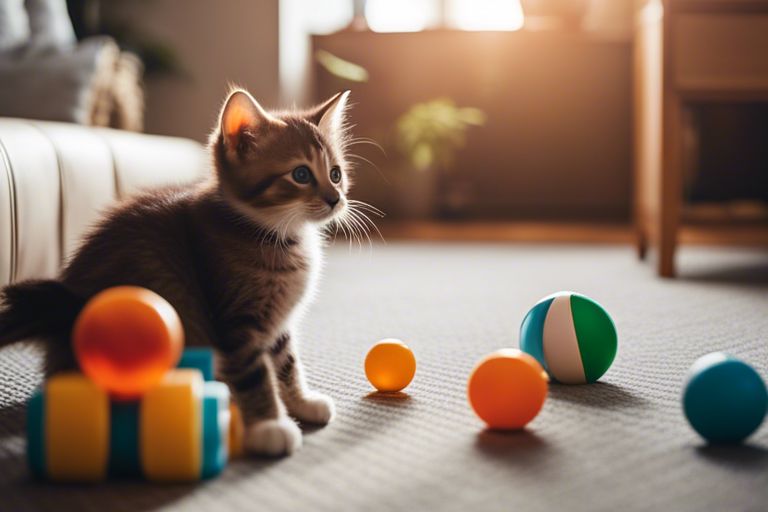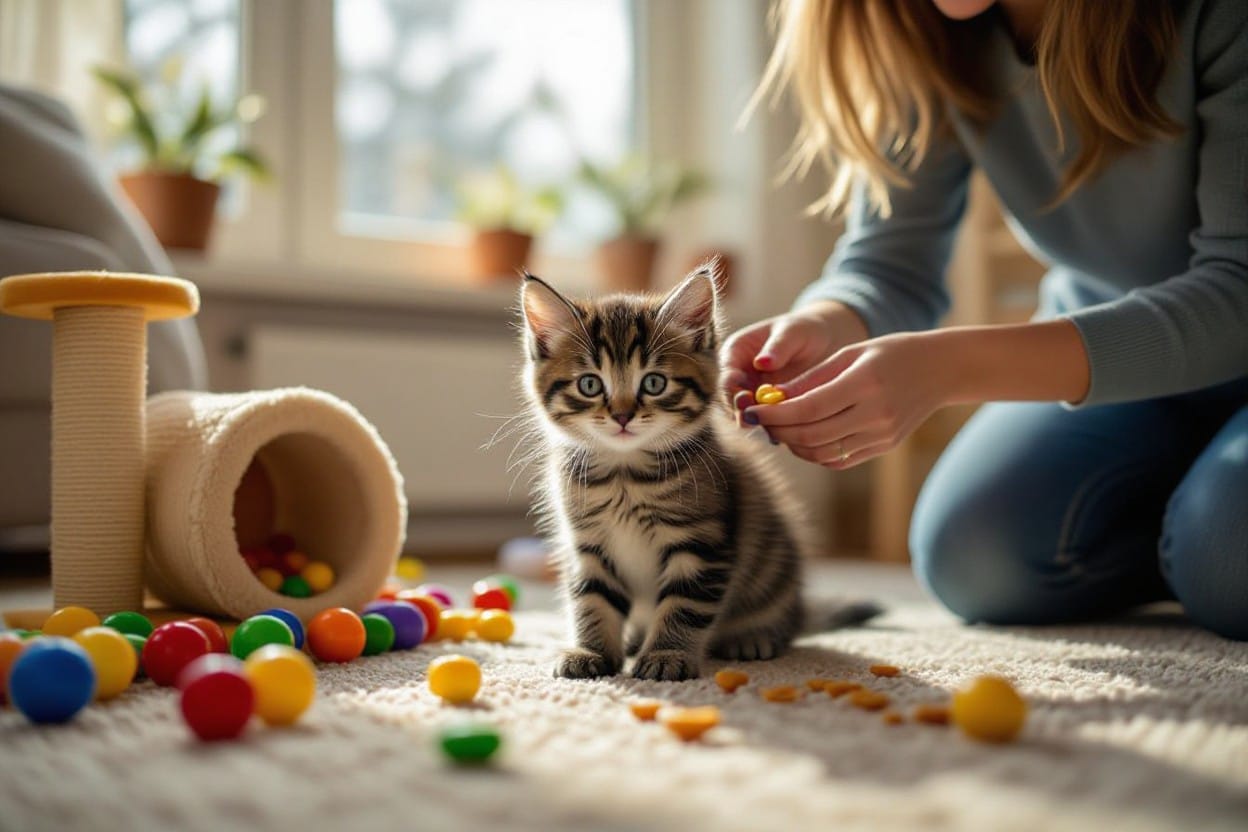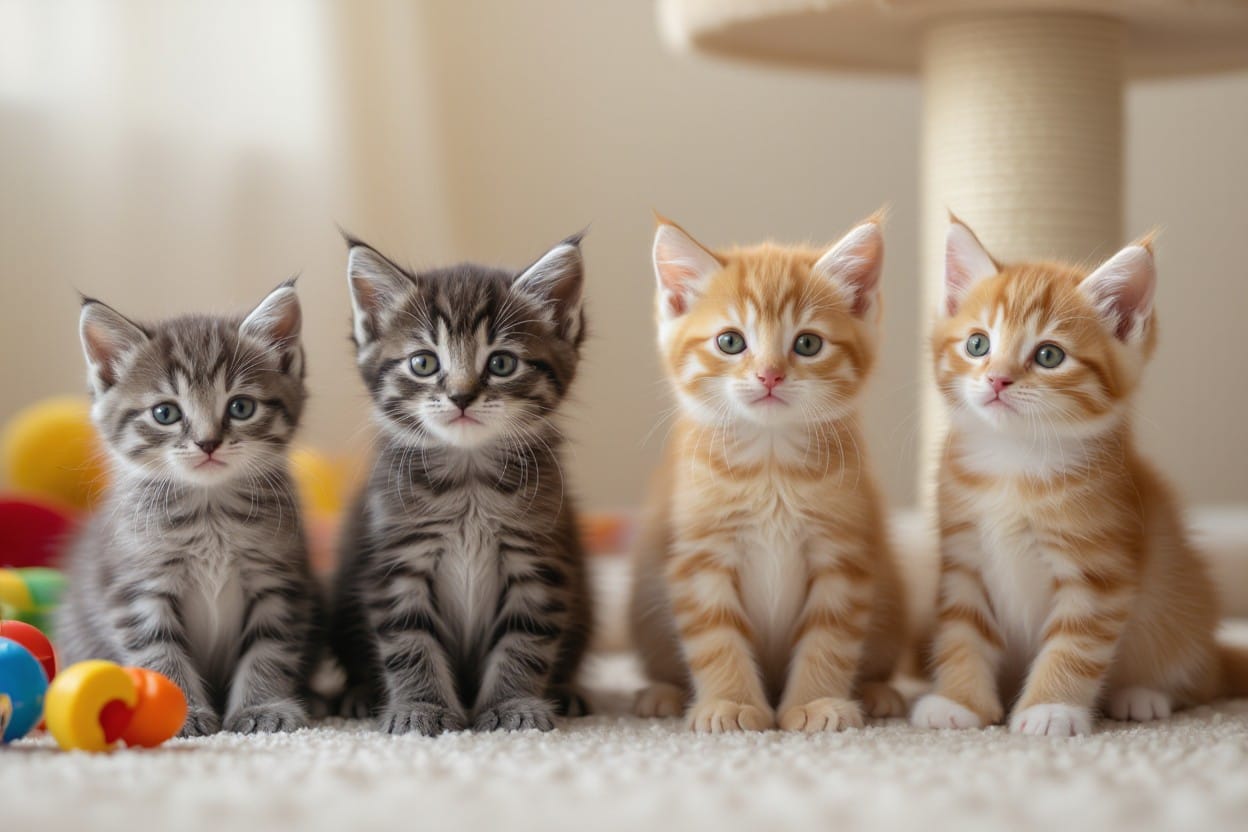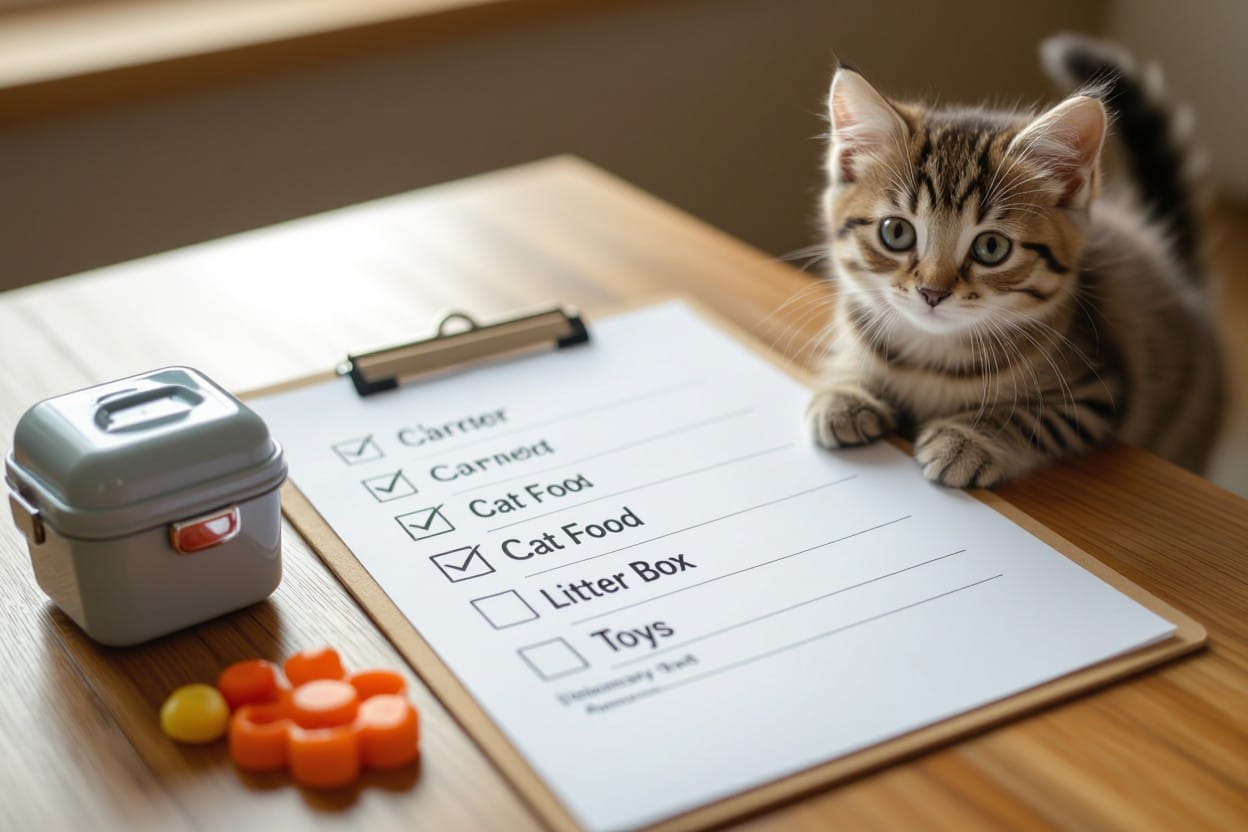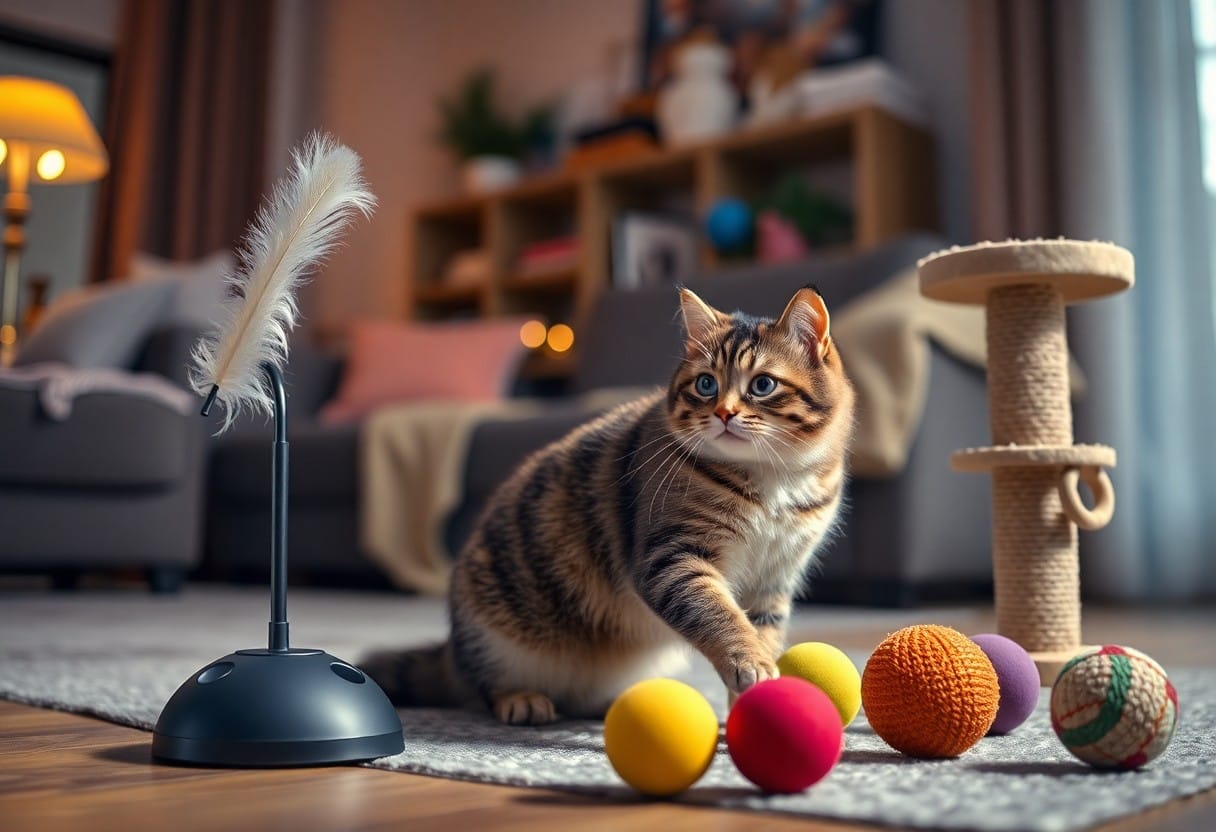Overwhelmed by the responsibilities of training a new kitten? Fear not, as we have compiled a list of important training tips to help you navigate the world of kitten parenthood with ease. Bringing a new kitten into your home can be an exciting yet challenging experience, but with the right guidance and approach, you can set your furry friend up for success in no time. From litter box training to teaching basic commands, these tips will help you establish a strong foundation for a well-behaved and happy kitten.
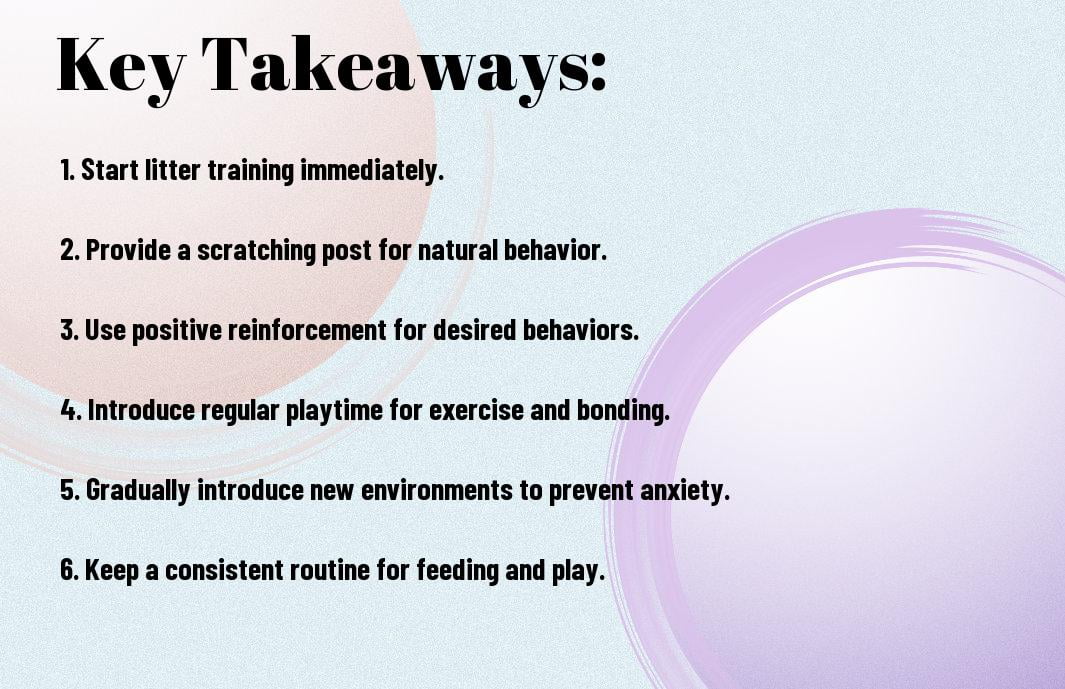
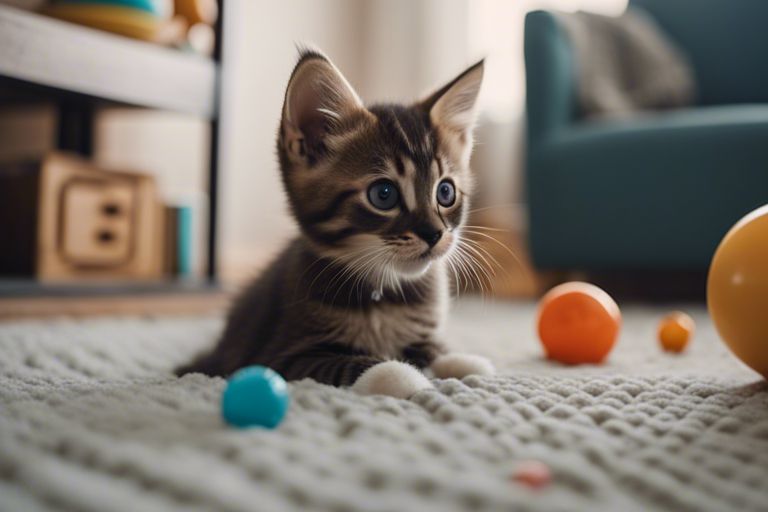
Setting the Stage for Successful Training
Creating a Safe and Stimulating Environment
Creating a safe and stimulating environment for your new kitten is crucial for their overall well-being and successful training. Make sure to kitten-proof your home by removing any potential hazards such as electrical cords, toxic plants, and small objects that they could swallow. Provide plenty of interactive toys and scratching posts to keep your kitten engaged and entertained. Consider setting up different levels in their environment for climbing and exploring to satisfy their natural instincts.
Essential Supplies for Training Your Kitten
In terms of training your kitten, having the right supplies on hand is important. Some basic supplies you may need include a litter box, high-quality kitten food, food and water bowls, a comfortable bed, and a variety of toys. It is also recommended to have a scratching post to redirect their natural scratching behavior away from your furniture. Additionally, investing in a cozy cat carrier for trips to the vet or travel can help make the experience less stressful for your kitten.
Having the necessary supplies ready before bringing your new kitten home will not only set them up for success but also make the training process more efficient and enjoyable for both you and your furry friend.
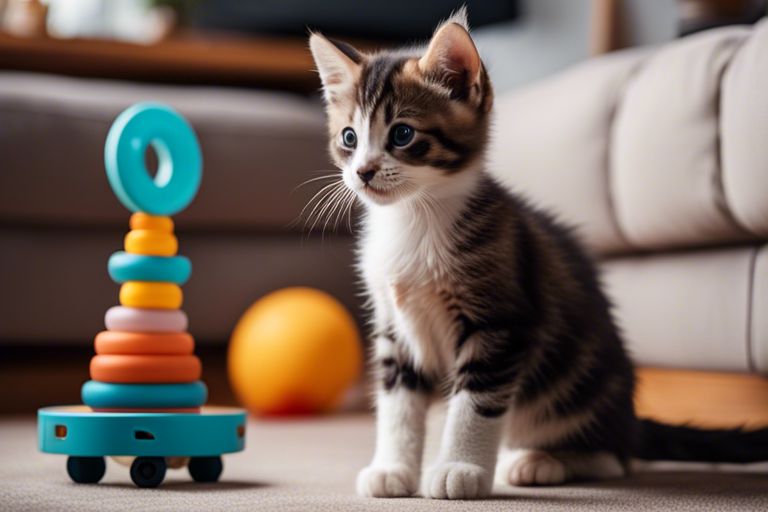
Socialization: The Key to a Well-Adjusted Kitten
The Importance of Early Socialization
Early socialization is crucial for helping your kitten grow into a well-adjusted adult cat. Kittens go through a sensitive period between 2 to 7 weeks old, during which they are most receptive to new experiences and learning about their environment. Exposing your kitten to a variety of people, animals, sounds, and environments during this time can help curb fear and anxiety later in life.
Proper socialization can help build your kitten’s confidence, teach them how to interact with others, and make them less likely to be fearful or aggressive in unfamiliar situations. When done correctly, early socialization lays the foundation for a happy, well-adjusted cat who is comfortable in a range of environments and with different people.
Practical Socialization Techniques
An crucial technique for socializing your kitten is gradual exposure. Start by allowing your kitten to meet new people in a quiet and controlled environment. Encourage gentle handling and positive interactions with a variety of individuals. Furthermore, introduce your kitten to other pets, if you have them, in a supervised and calm manner. This can help your kitten learn appropriate social behaviors and reduce the likelihood of aggression towards other animals in the future.
Practical socialization also involves exposing your kitten to different environments and stimuli. Take your kitten for short car rides, introduce them to different surfaces to walk on, and play recordings of various sounds to familiarize them with everyday noises. These experiences can help your kitten feel at ease in new situations and prevent them from developing phobias later in life.
Litter Training Basics
Choosing the Right Litter Box and Litter
An necessary aspect of litter training your new kitten is selecting the right litter box and litter. There are various types of litter boxes available, including open trays, covered boxes, and automatic self-cleaning boxes. It’s crucial to choose a box that is large enough for your kitten to comfortably move around in. Additionally, consider the depth of the box, as some kittens prefer deeper litter for digging.
In the matter of choosing litter, there are several options to consider, such as clumping, non-clumping, silica gel, recycled paper, or natural materials like wood pellets. Kittens generally prefer unscented, fine-grain litter. It’s advisable to start with a basic clumping litter as it is easy to clean and maintain.
The Step-by-Step Process of Litter Training
Choosing the right time to start litter training is crucial. It’s best to introduce the litter box to your kitten immediately after meals or naps when they are most likely to eliminate. Place your kitten in the litter box and gently scratch their paw in the litter to simulate digging. Consistency is key during this training process – place your kitten in the litter box several times a day, especially after meals and naps.
It’s important to praise your kitten when they use the litter box correctly. If accidents happen outside the box, never scold your kitten. Instead, clean up the mess promptly and place the waste in the litter box to help them associate the box with the proper elimination spot.
It is crucial to be patient and understanding during the litter training process. Each kitten is different, and some may catch on quickly while others may take more time. By providing a suitable litter box and litter, along with positive reinforcement, your kitten will learn to use the litter box effectively.
Teaching Basic Commands and Tricks
The Power of Positive Reinforcement
Positive reinforcement is a highly effective method for teaching your new kitten basic commands and tricks. This training technique involves rewarding your kitten with treats, praise, or playtime when they correctly perform a desired behavior. By rewarding good behavior, you are reinforcing the connection between the action and the positive outcome, making it more likely that your kitten will repeat the behavior in the future.
It’s important to use positive reinforcement consistently and immediately after your kitten performs the desired behavior. This will help your kitten understand which behaviors are being rewarded and make the training process more successful and enjoyable for both of you.
Simple Commands to Start With: Sit, Stay, Come
On your journey to teaching your new kitten basic commands and tricks, starting with simple commands like sit, stay, and come can lay a solid foundation for more advanced training in the future. These commands are practical for everyday interactions with your kitten and can help establish a bond of trust and communication between you.
More on Simple Commands to Start With: Sit, Stay, Come
To begin teaching your kitten these simple commands, it’s crucial to be patient and consistent in your training efforts. Use treats or toys as incentives to encourage your kitten to respond to the commands. For example, when teaching the “sit” command, gently press down on your kitten’s hindquarters while saying the word “sit” and reward them with a treat once they are in a sitting position. With practice and positive reinforcement, your kitten will soon learn to sit, stay, and come when called.
Discouraging Unwanted Behaviors
Once again, we find ourselves faced with the challenge of correcting unwanted behaviors in our new feline companions. Cats, especially kittens, can exhibit a variety of behaviors that may not fit well with our human lifestyles. It is imperative to address these behaviors early on to prevent them from becoming ingrained habits.
Identifying Common Kitten Misbehaviors
Discouraging unwanted behaviors in kittens starts with identifying and understanding what those behaviors are. Common kitten misbehaviors include scratching furniture, biting, using the litter box incorrectly, excessive meowing, and pouncing on feet or hands. By recognizing these behaviors early on, you can take proactive steps to redirect their actions effectively.
Effective Methods for Redirection and Discipline
For new kitten owners, it is vital to employ effective methods for redirection and discipline. When your kitten exhibits a behavior you do not approve of, such as scratching the sofa, it is crucial to redirect their attention to a more appropriate outlet, like a scratching post. Positive reinforcement, such as praising and providing treats when they use the scratching post, can help encourage good behavior.
The key to successful discipline lies in consistency and patience. Never resort to physical punishment, as this can harm your bond with your kitten and lead to fear or aggression. Instead, use firm but kind redirection techniques, such as using a sharp ‘no’ and quickly guiding them to the desired behavior. With time and dedication, your kitten will learn which behaviors are acceptable and which are not.
Health and Nutrition: Supporting Your Kitten’s Development
Creating a Balanced Diet for Your Kitten
Development of your kitten is crucial in these formative months, and a balanced diet plays a significant role. Ensure your kitten receives a diet that is rich in crucial nutrients such as proteins, vitamins, and minerals. Protein is crucial for muscle development, while vitamins and minerals support overall growth and immunity. Consult with your veterinarian to determine the best diet plan for your kitten’s specific needs and growth stage.
The Role of Nutrition in Behavior and Training
With proper nutrition, your kitten’s behavior and training can be greatly influenced. Nutrient-rich foods support cognitive development, which can aid in your kitten’s ability to learn and retain new behaviors. Studies have shown that certain nutrients, like omega-3 fatty acids, can contribute to improved behavior and trainability in kittens. By providing your kitten with a diet tailored to support cognitive function, you are setting them up for success in their training and development.
The Role of Nutrition in Behavior and Training goes beyond just physical health. It can have a significant impact on your kitten’s overall behavior, learning capabilities, and response to training. By understanding the importance of a balanced diet and how it influences their behavior, you can proactively support your kitten’s development and help them reach their full potential.
Advanced Training and Activities
To ensure that your kitten continues to grow and thrive, it’s important to provide advanced training and activities that will stimulate their body and mind. Here are some key tips for taking your kitten’s training to the next level:
- Advanced Training Techniques
1.1 Clicker Training 1.2 Target Training 1.3 Trick Training - Enriching Activities
2.1 Interactive Toys 2.2 Puzzle Feeders 2.3 Indoor Agility Courses
By incorporating these advanced training techniques and enriching activities into your kitten’s routine, you can help them stay mentally and physically active. Remember to always use positive reinforcement and patience when training your kitten, and most importantly, have fun bonding with your furry friend!
FAQ
Q: What is the best way to litter train my new kitten?
A: The best way to litter train your new kitten is to place them in the litter box after meals or naps, as they are more likely to need to go at these times. Consistently praise and reward them when they use the litter box correctly.
Q: How can I properly socialize my new kitten?
A: Properly socializing your new kitten involves exposing them to various people, animals, and environments in a positive manner. Encourage gentle handling and playtime to help them feel comfortable and secure around different stimuli.
Q: What kind of toys are best for my new kitten’s training and development?
A: Toys that encourage natural behaviors such as pouncing, chasing, and scratching are best for your kitten’s training and development. Interactive toys and puzzle feeders can also provide mental stimulation and enrichment.
Q: How should I introduce my new kitten to other pets in the household?
A: When introducing your new kitten to other pets in the household, do so gradually in a controlled environment. Use scent swapping and feeding near each other to create positive associations. Supervise interactions and provide separate safe spaces for each pet.
Q: How can I effectively train my kitten to use a scratching post instead of furniture?
A: To train your kitten to use a scratching post, place the post near their favorite scratching spots and encourage them to use it with treats or catnip. Redirect any attempts to scratch furniture with a firm “no” and gently guide them to the scratching post.
